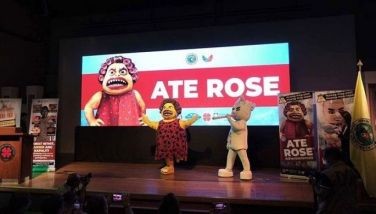Mandingo Style
My theory about Quentin Tarantino films is that they are only as good as the genre he chooses to work in. Thus, in order to be a Tarantino “classic,†the film must operate within a genre that already has a canon of “classics.†So a film like Reservoir Dogs stands the test of time because there have been plenty of classic heist films that have raised the genre to epic heights. On the other hand, something like Death Proof can only aspire to be as good as a drive-in car chase movie from the ‘70s — though pumped up with several gallons more adrenaline and witty dialogue. And Kill Bill 1 and 2, despite its careful film referencing, can never really rise beyond being a crude martial arts revenge flick.
Conversely, Inglourious Basterds has a rich vein to draw from — the World War II film, and also European cinema itself — a history peppered with classics along with plenty of B movies; so it, too, can be considered among the higher cinematic pantheon.
Pulp Fiction, of course, was in a league of its own; perhaps due to the vigorous cross-writing between Tarantino and Roger Avary, it produced enough genre referencing — gangster film, fight film, romance, comedy — to escape easy classification. And the underrated Jackie Brown was a classy nod to noir mixed with ‘70s Blaxploitation.
Now we have Django Unchained, which is both unapologetically entertaining and hard to take seriously in any way. Tarantino doesn’t strive to push the boundaries of the genres here — Spaghetti Western, Southern Gothic, snowy ‘70s Western à la Jeremiah Johnson or Silenzio's The Great Silence — he merely applies the Tarantino Formula to it all, resulting in what some mistakenly refer to as a “historical†film. (Recall that Tarantino’s history education took place working in a video store.) We saw in Inglourious Basterds that he was willing to play hard and loose with history, even that period of history which has been enshrined in Hollywood’s canon: the Holocaust. His film was a “What if?†— never a “What happened?†What if there were super-Jews who infiltrated Germany to scalp Nazis?
 Blood on his hands: Plantation owner Calvin Candie (Leo Di Caprio) explains a point of Phrenology to his guests.
Blood on his hands: Plantation owner Calvin Candie (Leo Di Caprio) explains a point of Phrenology to his guests. Same with Django. Taking its opening score from a lesser 1966 Spaghetti Western called Django, the film is instantly transported beyond its dusty origins to something quite magical due to the interplay between Christoph Waltz and Jamie Foxx (playing bounty hunter Dr. Schultz and Django, the slave he frees). Waltz is Tarantino’s new muse, and it’s his way with delivering a line that elevates throwaway dialogue to something actually freighted with choice and character.
The same is not quite true of Foxx, who despite his Oscar, has a hard time convincing us he’s an authentic 1858 freed slave. He speaks in a modern vernacular, with the accumulated wisdom and history of 100 years post-slavery. This, of course, is Tarantino’s intention: to present Django as a sort of Blaxploitation hero: Shaft sent back in a time machine to pre-Civil War days. But beneath Foxx’s veneer of cool and his quick draw, there’s not much character development to hold our attention. Even Clint Eastwood, for all his flinty acting playing The Man With No Name or Blondie in The Good, the Bad and the Ugly, made us care about his quest. In Django Unchained, Waltz has to outline the quest in epic Germanic terms: the freed slave is Siegfried, rescuing Brünnehilde from the dragon’s lair. But it doesn’t feel so epic. It feels like a series of set pieces lit up by periodic sprays of blood and gore.
Tarantino lives and breathes by the revenge plot. That’s fine; much of Hollywood’s best revolves around a good revenge plot. Enter Leonardo Di Caprio as Calvin Candie, a plantation owner who specializes in torturing slaves and raising Mandingo fighters — African bucks who fight to the death for their massah. It’s hard not to think of Filipino fighting cocks and their loving masters while watching Django Unchained, except what Candie loves is not his slaves, but the social order of the South, which he feels will never change. Yet the Civil War is two years away, as we are told in the opening credits.
So Django is a kind of companion piece to that other Oscar bait, Lincoln. While Spielberg’s biopic is shot through an Obamic lens, showing us a US president in his second term, famous and popular, yet still trying to fulfill the promise of his popularity, even as the Civil War rages in its fifth year, Django Unchained takes a pre-War stance: it’s a fairytale in which a German bounty hunter accompanies a freed slave through the horrors of the antebellum South. Slaves are whipped, fed to dogs. Things are not good in the pre-Obama days.
The man who made Pulp Fiction still has a master’s eye: whether it’s the majestic Western settings, the magic hour Southern interiors, or the sight of raw cotton plants suddenly splattered with blood, Tarantino is no less in love with film’s visual appeal. And while Django’s story is a bit simplistic, it does depict the evils of slavery in a more visceral, affecting way than Lincoln dared.
Where Tarantino’s script shines is its insight into why the slave system persisted, a century after many European countries had shunned it as inhumane. It wasn’t just profit. “I often wonder why the slaves didn’t just decide to kill us?†Candie asks at one point. Indeed, the black slave population largely outnumbered white landowners. Candie’s reason is Phrenology, a pseudoscience that posited physiological differences in the brain that made blacks “more submissive.†(This is a great scene involving a dead slave’s skull, which transcends Hamlet comparisons, even while referencing it.)
What Tarantino recognizes in Django is that slavery persisted in some measure because most slaves weren’t capable of envisioning themselves as free. There’s Stephen (Samuel L. Jackson, practically stealing the movie from under Foxx’s and Di Caprio’s noses), an Uncle Tom who bobs and scrapes in front of Candie’s guests, but sniffs out the truth about Django and Dr. Schultz even before his massah does. Stephen represents the “lowest†type of slave, the one who would sell out his own race for continued comfort. Indeed, it was this deep belief in the South, mutually held between slave and master, which helped perpetuate slavery as long as it lasted.
It takes a cool, cheroot-smoking cowboy like Django — a modern black hero sent back in a time machine — to ignite the truth, blowing up Candie Land in the process. Yet the result, in Django Unchained, somehow feels less like a cinematic classic. It’s entertaining, though: the equivalent of Scream, Blacula, Scream rather than the bona fide B-movie art of Shaft. Maybe it all comes down to sources.
















